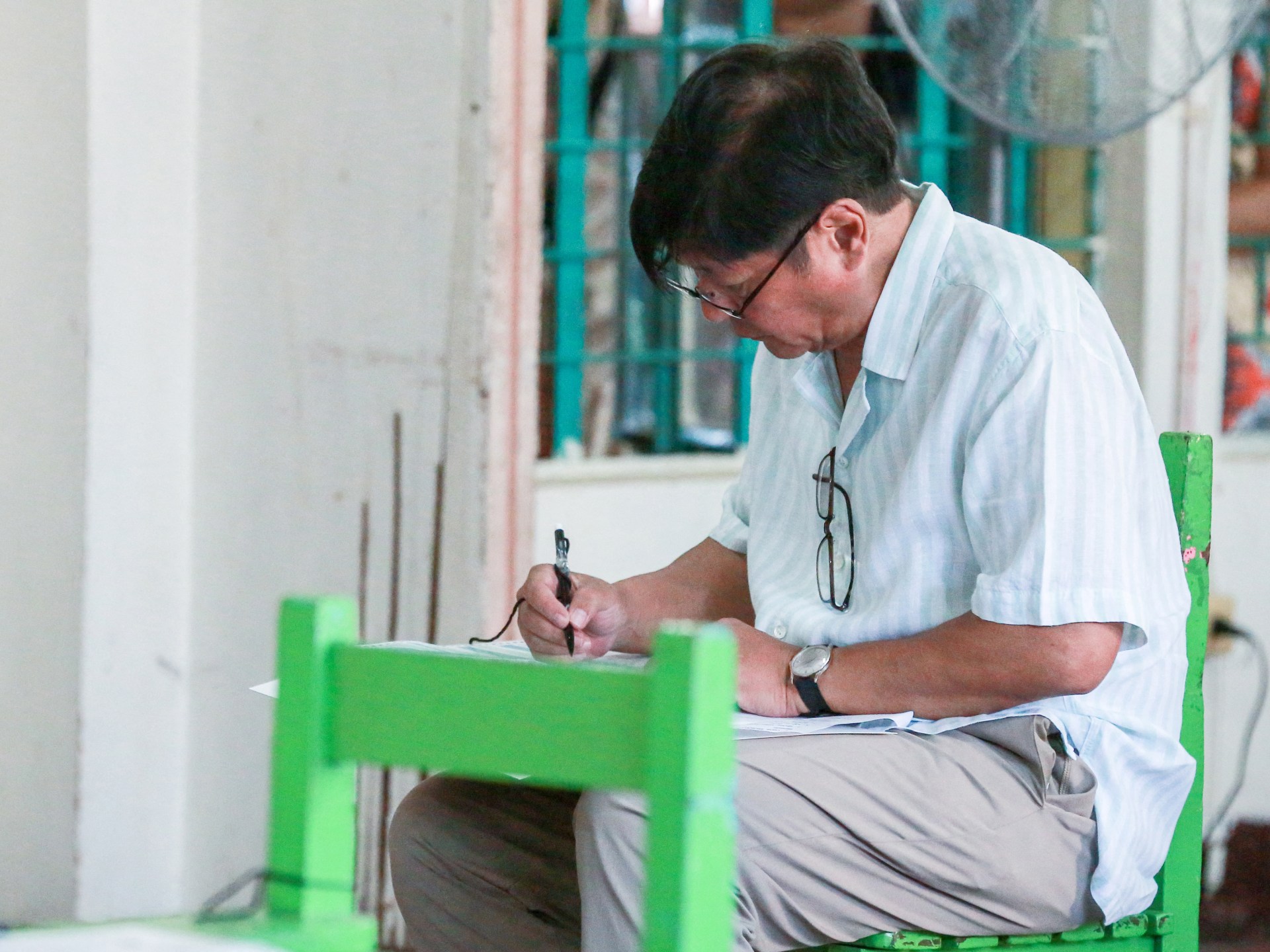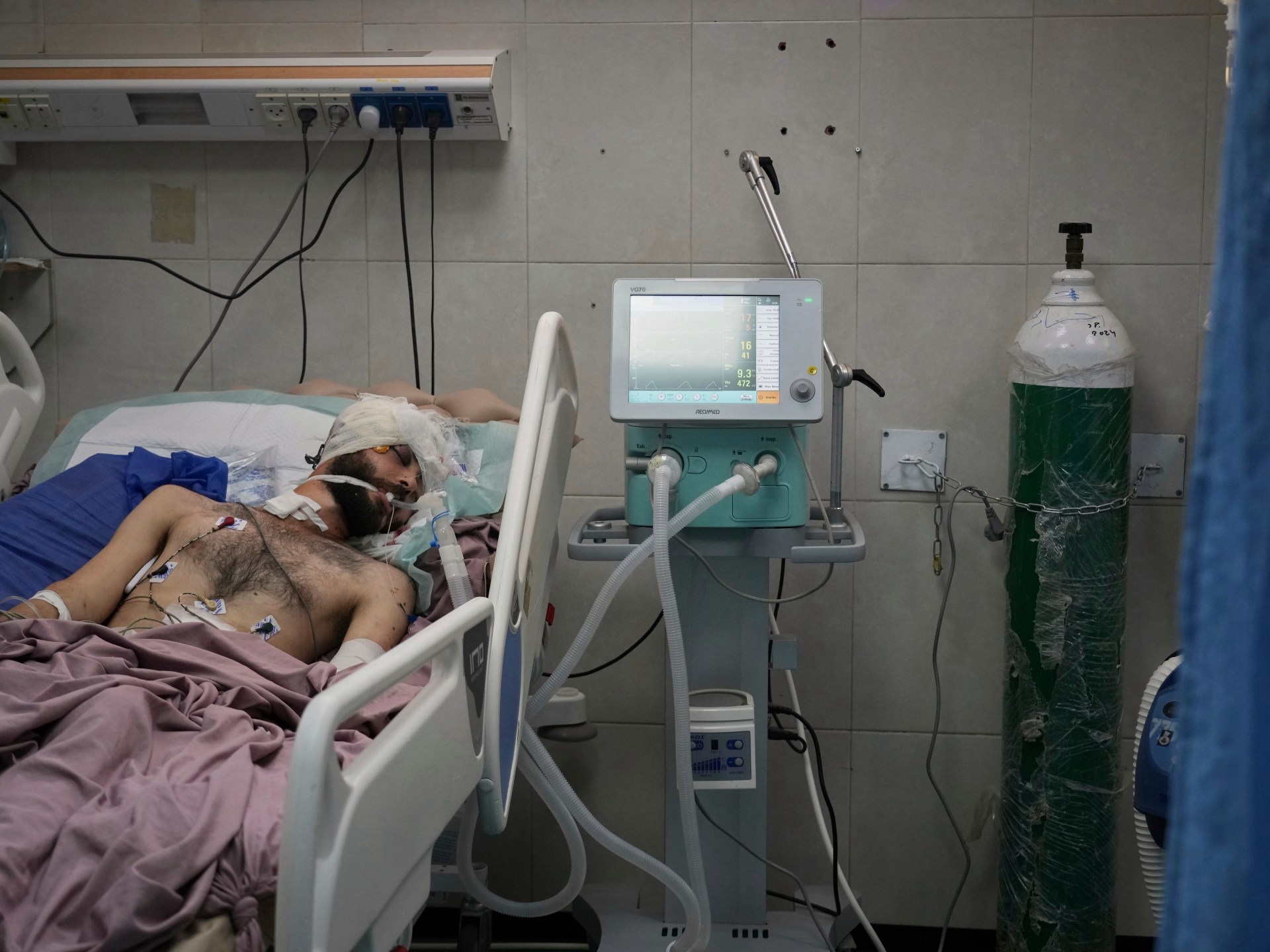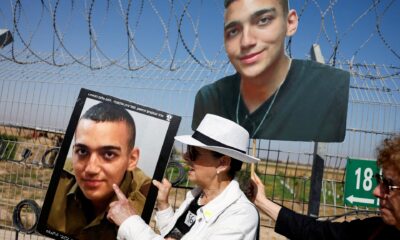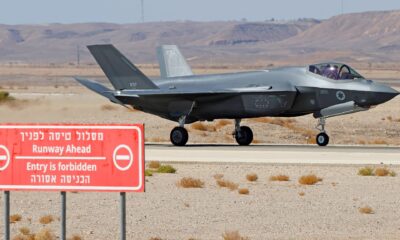Conflict Zones
‘No guardrails’: How India-Pakistan combat obliterated old red lines | India-Pakistan Tensions News

New Delhi, India – Guns have fallen silent for now along the tense India-Pakistan frontier, after a ceasefire that appears to have held for three nights.
On May 7, India launched predawn attacks on what it called multiple “terror sites” across Pakistan to avenge the April 22 killing of 26 men, almost all of them tourists, in Indian-administered Kashmir’s resort town of Pahalgam. New Delhi accused Islamabad of backing the gunmen. Pakistan denied its involvement.
India’s aerial assault kick-started four days of heightened tension, as both neighbours fired missiles and drones at each other’s military installations in a rapidly escalating cycle that brought them to the brink of full-scale war.
Both sides have claimed to have decisively damaged, even destroyed, the other’s key strategic facilities, even though early evidence suggests more limited damage to military bases in both India and Pakistan.
Yet even as India and Pakistan arrived at a ceasefire that United States President Donald Trump insists his administration brokered, experts say something has indeed been decimated, potentially beyond repair: Old red lines that had defined the tense relationship between the South Asian neighbours.
“India and Pakistan have entered a phase of ‘armed coexistence’ with little room for diplomacy and a narrow margin for error, despite having a live and sensitive border,” Praveen Donthi, senior analyst at the International Crisis Group in New Delhi, told Al Jazeera.
“This situation does not bode well for either country or the region, because even accidental triggers could escalate into a war-like situation with no guardrails in place.”
India-Pakistan dispute: Who settles it?
The seeds of the India-Pakistan conflict were sown when their independence from British rule in 1947 was accompanied by a partition of the Indian subcontinent to create Pakistan.
Since then, the two neighbours have fought four wars, three of them over Kashmir, a region they both control partially along with China, which governs two thin slices in the north. India claims all of Kashmir, while Pakistan claims all parts other than the ones governed by China, its ally.
After their 1971 war that led to the creation of Bangladesh, India and Pakistan signed what is known as the Simla Agreement, which said “the two countries are resolved to settle their differences by peaceful means through bilateral negotiations.”
While Pakistan has often cited United Nations resolutions to argue for international involvement in the resolution of the Kashmir dispute, India has cited the Simla Agreement for more than half a century to insist that any negotiations between the countries be strictly bilateral.
To be sure, the US has since intervened to calm tensions between India and Pakistan: In 1999, for instance, President Bill Clinton pressured Pakistani Prime Minister Nawaz Sharif to withdraw troops from the icy heights of Indian-controlled Kargil, where they had entered. However, Washington publicly played coy about its role, allowing India to insist that the US had only helped with crisis management, not any dispute resolution mediation.
That changed on Saturday, when US President Donald Trump upstaged New Delhi and Islamabad to announce a “full and immediate” India-Pakistan ceasefire hours before the governments of Indian Prime Minister Narendra Modi or his Pakistani counterpart Shehbaz Sharif confirmed the development.
The next day, Trump went further. “I will work with you, both to see if, after a ‘thousand years,’ a solution can be arrived at concerning Kashmir,” he posted on his Truth Social platform.
And on Monday, merely 30 minutes before Modi was scheduled for his first address since India launched attacks in Pakistan, Trump told reporters at the White House that his administration had leveraged trade to reach a ceasefire. “Let’s stop [the fighting]. If you stop it, we’ll do a trade. If you don’t stop it, we’re not going to do any trade,” Trump said. “And all of a sudden they said, ‘I think we’re going to stop.’ For a lot of reasons, but trade is a big one.”
Such US mediation, were it to happen, would shatter India’s longstanding red line against mediation by other countries, say experts.
“India has consistently sought to avoid third-party involvement in the Kashmir dispute even as it has occasionally welcomed third-party help in crisis management,” Christopher Clary, a former Pentagon official and a non-resident fellow at the Washington, DC-based Stimson Center, told Al Jazeera.
When he spoke, Modi largely stuck to traditional positions he has taken after previous bouts of tension with Pakistan. He said “terror and talks cannot happen together,” and “water and blood cannot flow together,” a reference to the Indus Waters Treaty for sharing water between India and Pakistan, which New Delhi walked out of after the Pahalgam attack.
Unlike Pakistan PM Sharif, who expressed gratitude to Trump for brokering a ceasefire, Modi claimed that India had “only paused” its military action – noting the decision was taken bilaterally. He did not mention Trump or his administration.
Regardless, “the spectre of international intervention” in Kashmir has been resurrected, said Sumantra Bose, political scientist and the author of the 2021 book Kashmir at the Crossroads. He said India’s furious barrage of missiles and drones at Pakistan in response to the Pahalgam killings “catered to domestic jingoism but naturally roused global alarm”.
India might, however, be helped in avoiding actual US intervention in Kashmir by the immediacy of the Trump administration’s other foreign policy goals, like the conflicts in the Middle East and Ukraine, “that will divert already overburdened [American] policymakers to other tasks”, said Clary.
Unprecedented targets
According to Bose, India and Pakistan crossed not just red lines, “but a Rubicon by attacking numerous high-population targets in cities and towns” last week.
India, in its most expansive offensive against Pakistan outside full-blown wars, said it hit “terrorist infrastructure” on May 7 as part of what it called Operation Sindoor. That was a reference to the vermillion that married Hindu women apply to their forehead, and an allusion to the manner in which the Pahalgam attack appears to have unfolded: Multiple witness accounts suggest the attackers segregated the men, then picked and hit non-Muslims.
Modi claimed, in his Monday statement, that the Indian attacks had killed more than 100 “terrorists”. Pakistan has insisted that only 31 civilians – including two children – were killed in the May attacks.
Yet both sides agree that the Indian missiles struck not just two cities – Muzaffarrabad and Kotli – in Pakistan-administered Kashmir, but also four cities in Pakistan’s Punjab province, the county’s economic heart and home to 60 percent of its population. The targets were Bahawalpur, Muridke, Shakar Garh and a village near Sialkot. This was the first time that India had struck Punjab since the 1971 war.
As tensions spiked, India accused Pakistan of unleashing a swarm of drones towards it – a charge Islamabad denied. Then India launched a wave of drones that reached Pakistan’s biggest population centres, including its two biggest cities, Karachi and Lahore. In the early hours of May 10, India and Pakistan fired missiles at each other’s military bases across multiple provinces – far beyond disputed Kashmir – even hitting a few.
Pakistan, which called its campaign Operation Bunyan Marsoos (a structure made of lead, in Arabic), targeted Indian air force bases and missile storage facilities in Drangyari, Udhampur, Uri and Nagrota (all in Indian-administered Kashmir), as well as in Pathankot, Beas and Adampur in Indian Punjab and Bhuj in Gujarat, Modi’s home state. Indian armed forces said that while they shot down most incoming missiles and drones, four air force bases suffered “limited damage”.
“We don’t know what the quantum [of Indian losses] are, but clearly Pakistan has demonstrated capability to impose costs on India even as we try to impose costs on them,” Indian military historian and strategic analyst Srinath Raghavan told Al Jazeera.
“Regarding red lines, another thing Pakistan sought to demonstrate was that they could keep this [the fighting] going till they had hit Indian military installations in retaliation.”
Meanwhile, India too targeted the Nur Khan airbase near Rawalpindi, Murid airbase in Chakwal and the Rafiqui airbase in Shorkot.
“India has shown that it is willing and capable of carrying out more strikes across the border, whether it’s a terrorist or even military infrastructure in Pakistan,” Raghavan said. India’s response went far beyond what happened in 2019, when Indian jets bombed what they described as a “terrorist camp” in Balakot, in Pakistan’s Khyber Pakhtunkhwa province, after a suicide bomber killed more than 40 Indian paramilitary soldiers.
Now, the 2025 attacks will serve as the new baseline for India, experts said.
“India would respond [in the future] on a similar scale, perhaps even a little bit more. Given the way both Balakot and the current crisis have played out, that should be the expectation,” said Raghavan.
Other weapons: Water to peace pacts
It isn’t just missiles and drones that the two sides fired at each other, though.
Right after the Pahalgam attack, India suspended its participation in the Indus Waters Treaty, a 1960 agreement that had previously survived three wars – in 1965, 1971 and 1999 – unscathed. The treaty gives India access to the waters of the three eastern rivers of the Indus basin: The Ravi, Beas and Sutlej. Pakistan, in turn, gets the waters of the three western rivers: The Indus, Jhelum and Chenab.
The river system is a vital lifeline for Pakistan, which relies on its waters. India, as the upper riparian state, has the ability – in theory at least – to restrict or stop the flow of the water into Pakistan. Islamabad described New Delhi’s decision to walk away from its obligations under the Indus Waters Treaty as an “act of war”.
In an incendiary remark at the peak of the tensions, Pakistani former Foreign Minister Bilawal Bhutto said “either the water will flow, or their blood will,” seemingly referring to Indians.
Three days after the ceasefire was announced, India has still not recommitted itself to the pact. In his speech on Monday evening, Modi’s statement that “blood and water cannot flow together” signalled that New Delhi had not yet decided to return to the treaty.
New nuclear threshold?
Even as India and Pakistan ratcheted up their measures – first diplomatically, then militarily – against each other, the rest of the world was spooked by the prospect of what could have turned into a full-blown war between nuclear-armed neighbours.
Up until now, that reality of nuclear weapons has affected India’s decisions in terms of how it treats its tensions with Pakistan, said Clary, the former Pentagon official. “India’s goal is to punish Pakistan without risking nuclear danger,” he said.
But on Monday, Modi appeared to suggest that New Delhi was reassessing that approach. “India will not tolerate any nuclear blackmail. India will strike precisely and decisively at the terrorist hideouts developing under the cover of nuclear blackmail,” he said.
Modi’s comments pointed to a “fundamental shift that has occurred in relations between India and Pakistan”, Donthi, the International Crisis Group analyst, said. “Both sides are willing to take greater risks and explore the potential for escalation below the nuclear threshold. However, there is very little space there, effectively making the euphemism of the region being a nuclear flashpoint truer than ever.”
Armed group or Pakistani government? No difference to India
Modi’s comments on “nuclear blackmail” weren’t the only ones that marked a break from the past.
When India launched attacks against Pakistan on May 7, it emphasised that it was only targeting “terrorist” bases and not attacking Pakistani military installations. However, on Monday, Modi said that in future, “India will not differentiate between the government sponsoring terrorism and the masterminds of terrorism.”
That position raises the danger of war, said experts.
“The conflation of terrorists and their (alleged) backers – namely, the military and the government – portends serious risks,” Donthi said. “It assumes that they are in lockstep. Such an assumption doesn’t take into account facts such as the seemingly successful ceasefire.”
India and Pakistan had signed a ceasefire along the Line of Control (LoC) in 2003 and had renewed it in 2021. Despite cross-border firing along the LoC, the ceasefire had largely held until last week.
With the threshold for a military conflict lowered, “the situation has become precarious,” Donthi said.
“A single militant attack is all it takes to plunge into war, leaving no room for diplomacy and raising no questions. Any power hostile to either or both sides can exploit this.”
Conflict Zones
Philippines election results: Who won, who lost and what’s next? | Elections News

Former Philippine President Rodrigo Duterte, detained at the International Criminal Court (ICC), is on course to win the mayoral election in his home Davao City, and five candidates backed by his family are leading the Senate race as midterm election results appear to show the Duterte political dynasty’s continued grip on power.
The results are a big boost for Vice President Sara Duterte, Rodrigo Duterte’s daughter, who faces impeachment by the Senate in July. A two-thirds majority is required to remove her from office and bar her from running in future elections, including the 2028 presidential one.
Twelve out of 24 Senate seats and all 317 seats in the House of Representatives were among the 18,320 elective positions up for grabs in the key election. Nearly 69 million people were registered to vote in the Asia Pacific country.
Who won the election?
With 97 percent of the votes reported, candidates backed by President Marcos Jr are on course to win six of the 12 seats in the Senate.
Duterte’s supporters, including staunch ally Christopher “Bong” Go are set to win five seats. One candidate who is winning a seat has been affiliated with both political families.
Rodrigo Duterte is set to win the mayoral seat in Davao after receiving more than 65 percent of the votes.
Duterte was the mayor of the southern city thrice, serving a total of 22 years. If he wins, it is likely that the role would be assumed by the city’s vice mayor, a position currently held by his son, Sebastian Duterte.
In the Philippines, candidates facing criminal charges, including those in detention, can run for office unless they are convicted.
What’s at stake?
While President Marcos Jr and Vice President Sara Duterte were not on the poll, their candidates were vying for positions from the Senate to municipal offices.
Sara Duterte is a strong contender for the 2028 presidential election. Her political future can be decided by the 24-member Senate. She requires support of nine Senate members to avoid conviction.
The 12 elected Senators will form half of the jury in her impeachment trial, which is tentatively set for July. If found guilty, she will be removed from office and barred from contesting future elections.
She was impeached by the House of Representatives in February after being accused of crimes ranging from the misuse of public funds to plotting Marcos’s assassination.
Sara Duterte says the impeachment is part of a political vendetta as the two families battle for power.
The fate of hundreds of governors and thousands of seats for city mayor and municipal mayors were also decided in this election.
The official results will be out within a week.
What is the political rivalry between the Marcos and Duterte families?
Sara Duterte is the daughter of former President Duterte, who was arrested and flown to the ICC at The Hague on March 11 by the Marcos Jr administration.
The elder Duterte was accused of “crimes against humanity” for the estimated deaths of 30,000 people during his tenures as mayor and president.
More than 7,000 people were killed during anti-drug operations while he was in power between 2016 and 2022, according to police records. Human rights advocates suggest the actual death toll was higher.
Marcos Jr allied with the Duterte family, which enjoyed popularity, during his successful 2022 presidential campaign, with Sara Duterte as his running mate. But the ties soon soured over policy differences and Marcos’s rejection of the war on drugs launched by Sara Duterte’s father, Rodrigo Duterte.
Finally, the alliance crumbled due to faltering support for Marcos Jr among supporters of the Duterte family after the arrest of Apollo Quiboloy, who was the spiritual adviser of former President Duterte. Quibology, an influential pastor, was charged with sex trafficking.
The arrest of Rodrigo Duterte on a warrant issued by the ICC further inflamed tension between the two political dynasties.
Until Rodrigo Duterte’s arrest, Marcos Jr repeatedly rejected the International Criminal Court’s (ICC) jurisdiction over his country, deeming the ICC “a threat” to the country’s sovereignty. Marcos Jr had held he would not assist the ICC in the elder Duterte’s arrest.
“Let me say this for the 100th time. I do not recognise the jurisdiction of ICC in the Philippines. The Philippine government will not lift a finger to help any investigation that the ICC conducts,” Marcos Jr said in early 2024.
In 2019, (Rodrigo) Duterte had removed the Philippines from the ICC, meaning the country was not required to detain someone with an ICC warrant against their name.
The political tensions between the Duterte family and Marcos Jr reached a crescendo when the younger Duterte was impeached this February. She remains VP, but a Senate trial hangs like the sword of Damocles over her head.
Conflict Zones
Gaza’s hospitals cannot provide food to recovering patients | Israel-Palestine conflict News

Hospital patients in Gaza are under increasing threat as Israel’s blockade on food and other supplies entering the enclave enters its third month.
Palestinians across Gaza are struggling to feed themselves, and with hospitals unable to provide food, families must bring whatever they can find for their loved ones.
“Most, if not all, wounded patients have lost weight, especially in the past two months,” said Dr Khaled Alserr, a general surgeon at Nasser Hospital in the southern city of Khan Younis.
Nutritional supplements for intensive care unit patients are lacking, he said. “Our hands are tied when it comes to making the best choice for patients. Choices are limited.”
Aid groups say that malnutrition is on the rise across Gaza.
Thousands of children have been found with acute malnutrition in the past month, but adults are also not receiving proper nutrients, according to the United Nations. It estimates that 16,000 pregnant women and new mothers this year face acute malnutrition.
Since Israel’s blockade began on March 2, food sources have been dwindling.
Aid groups have stopped food distribution. Bakeries have closed. Charity kitchens handing out bowls of pasta or lentils remain the last lifeline for most of the population, but they are rapidly closing for lack of supplies, according to the UN.
Markets are empty of almost everything except canned goods and small amounts of vegetables, and prices have been rising.
Local production of vegetables has plummeted because Israeli forces have damaged 80 percent of Gaza’s farmlands, the UN says, and much of the rest is inaccessible inside newly declared military zones.
Israel says it imposed the blockade and resumed its military campaign in March to pressure Hamas to release its remaining captives and disarm.
Israeli officials have asserted that enough food entered Gaza during a two-month ceasefire earlier this year. Rights groups have disputed that and called the blockade a “starvation tactic” and a potential war crime.
Now, Israel plans to control aid distribution in Gaza, using private contractors to distribute supplies.
The UN and other aid groups have rejected the idea, saying it could restrict who is eligible to give and receive aid and could force large numbers of Palestinians to move, which would violate international law.
Those under care at hospitals, and their families who scrounge to feed them, would face further challenges under Israel’s proposal. Moving to reach aid could be out of the question.
Israel’s war on Gaza has killed at least 52,829 Palestinians and wounded 119,554, according to Gaza’s Health Ministry. The enclave’s Government Media Office updated the death toll to more than 61,700, saying thousands of people missing under the rubble are presumed dead.
An estimated 1,139 people were killed in Israel during the Hamas-led attacks on 7 October 2023, and more than 200 were taken captive.
Conflict Zones
Do Israel’s attacks make a difference to Yemen’s Houthis? | Conflict News

Amid ferocious Israeli attacks on Yemen, ostensibly in response to Houthi attacks on Israel, surprising news from the United States seemed to shake matters briefly.
US President Donald Trump said on Tuesday that a ceasefire had been agreed between his country and the Houthis, claiming the Houthis had bent the knee and this was a victory for the US.
He also praised the Houthis for their bravery and resilience.
This meant the US would no longer be bombing Yemen, and the Houthis would stop firing at ships in the Red Sea in support of the Palestinians in Gaza.
There was no mention of Israel in Trump’s announcement – a sign, to many, of a possible chill between Trump and Israeli Prime Minister Benjamin Netanyahu.
The Houthis, for their part, made it clear that the deal does not extend to Israel and they would continue their attacks until Israel allowed aid into Gaza, ending the starvation it is imposing on the people there.
Israel left out?
Israel has been launching attacks on Yemen, claiming it wants to deter the Houthis, who took control of Sanaa in 2014 and already fought a years-long war against the internationally recognised Yemeni government.
Israel’s most recent attack, on Sunday, bore an eerie resemblance to how it has operated when bombing the trapped population of Gaza, issuing “warnings” to people in three Yemeni ports in Hodeidah governorate to flee, with less than an hour’s notice.
Whether this escalation is a reaction to the announced US ceasefire remains to be seen, but many analysts have spoken of a widening rift between Netanyahu and Trump.
Netanyahu has reportedly expressed his frustration with Trump’s Middle East policy in private conversations.
He has been publicly against the US administration’s talks with Iran, claiming there is no diplomatic way to resolve differences with Tehran, yet Iran and the US have continued their talks.
He went on to blame Iran for the Houthis’ attacks, claiming Israel’s attacks are a message to the “Houthis’ sponsors”.
Trump, for his part, has seemed unconcerned.
“It’s worth noting Trump didn’t say anything about [Houthi] attacks on Israel, which seem to be continuing amid this escalation,” Nicholas Brumfield, a Yemen analyst, told Al Jazeera.
“In [this] case, it’s a US drawdown because the Houthis haven’t been attacking international shipping,” Brumfield said. “They’ve been attacking Israel. The US has been doing its thing, and the Houthis have been targeting US ships.”
After Israeli attacks on Monday and Tuesday, which killed at least three people and wounded 35 others and damaged Hodeidah Port and Sanaa Airport, the Houthis promised retaliation.
The attacks “will not go unanswered”, the Houthi political bureau said in a statement.

That kind of statement is typical of the Houthis, who have managed to weather more than a decade of attacks by forces with far superior military capabilities.
Air strikes by the US and United Kingdom on Yemen in early 2024 were unable to stop the Houthis’ attacks on Red Sea traffic.
Years of air strikes by a Saudi-led coalition supporting Yemen’s internationally recognised government taught the Houthis to keep their military infrastructure agile, analysts told Al Jazeera.
A senior US government official, speaking on condition of anonymity, told Al Jazeera that recent US attacks on the Houthis have pushed leaders underground after the killing of some key military commanders.
However, unlike under US President Joe Biden’s administration, the attacks under Trump have been indiscriminate and have led to more civilian deaths. More than 250 people have been killed by US attacks on Yemen since mid-March, including at least 68 people at a centre housing detained African refugees and migrants in late April.
Experts told Al Jazeera that despite the increased ferocity of those attacks, the Houthis have not been deterred.
“The Houthis aren’t going to stop,” Brumfield said.
Israel still striking
The Houthis have made their stance clear vis-à-vis the agreement with the US and the continuation of attacks on Israel, which has also made clear that it plans to keep attacking.
“The stated aim is to deter [the Houthis] or deplete their military capabilities to the point that the Houthis cannot target Israel any more, but these are both very unrealistic goals,” Hannah Porter, an independent Yemen analyst, told Al Jazeera.
Israel already considers that it has diminished the capabilities of two of its biggest foes, Hezbollah in Lebanon and Hamas in Gaza, over the past 19 months.
But trying something like that on the Houthis would be a vastly different challenge, she said.
“Israel has probably not gathered the amount of intel on the Houthis that they have on Hamas or Hezbollah, so tracking and targeting leaders will be harder,” Porter said.
“More importantly, the geographic area is much larger in northern Yemen, meaning that there are far more potential targets.”
“The terrain is a factor, too,” she added. “Northern Yemen is very mountainous with plenty of places to hide people and weapons.”
For now, Israel and the Houthis seem intent on continuing their exchange of attacks. And the first to suffer will be the people of Yemen.
Israel struck numerous targets in recent days in Yemen, including Sanaa’s airport and the port in Hodeidah, which experts said is likely to exacerbate Yemen’s dire humanitarian situation.
Israel destroyed at least three civilian planes in the attacks.

Yemen is already suffering one of the world’s worst humanitarian crises. More than 18.2 million people require humanitarian assistance and protection services, according to the United Nations.
More than 17.1 million Yemenis suffer acute food shortages, and about five million are on the brink of famine.
While analysts said Israel’s attacks on ports will not be a “knockout blow”, they are among a matrix of factors that leave many Yemenis in an increasingly precarious position.
“The humanitarian situation will just get worse,” Raiman Al-Hamdani, a Yemen researcher with the international development company ARK, told Al Jazeera.
“Destroying the two main ports of northern Yemen, where the majority of the population lives, coupled with the FTO [“foreign terrorist organisation”] designation with cuts to the aid system around the world and the deteriorating economy … is a recipe for [unprecedented] humanitarian disaster.”
“[Israel’s attacks] are a continuation of its strategy. It’s out of spite, targets civil infrastructure and the policy of creating human suffering,” Al-Hamdani said.
Both sides seem unwilling to stop, however.
“I cannot see anything quite good coming out of this unless the war Israel is waging on Gaza comes to some form of truce,” Al-Hamdani said.
-

 Europe2 days ago
Europe2 days agoA bridge builder and quiet reformer. How Pope Leo will lead the Catholic Church
-

 Middle East2 days ago
Middle East2 days agoHamas says it will release US-Israeli captive Edan Alexander | Israel-Palestine conflict News
-

 Africa13 hours ago
Africa13 hours agoWTO Chief urges cooperation in Japan trade talks
-

 Europe1 day ago
Europe1 day agoRussian spy ring leader jailed in UK for nearly 11 years
-

 Sports1 day ago
Sports1 day agoJunior Alvarado: Kentucky Derby-winning jockey fined $62,000 and suspended for overuse of whip
-

 Lifestyle1 day ago
Lifestyle1 day agoAs Biden-era ‘junk fee’ rule takes effect, Ticketmaster says it will display fees more clearly
-

 Middle East1 day ago
Middle East1 day agoUK veterans allege war crimes by British forces in Afghanistan, Iraq | Crime News
-

 Middle East11 hours ago
Middle East11 hours agoCampaigners take UK to court over export of F-35 components to Israel | Israel-Palestine conflict News




